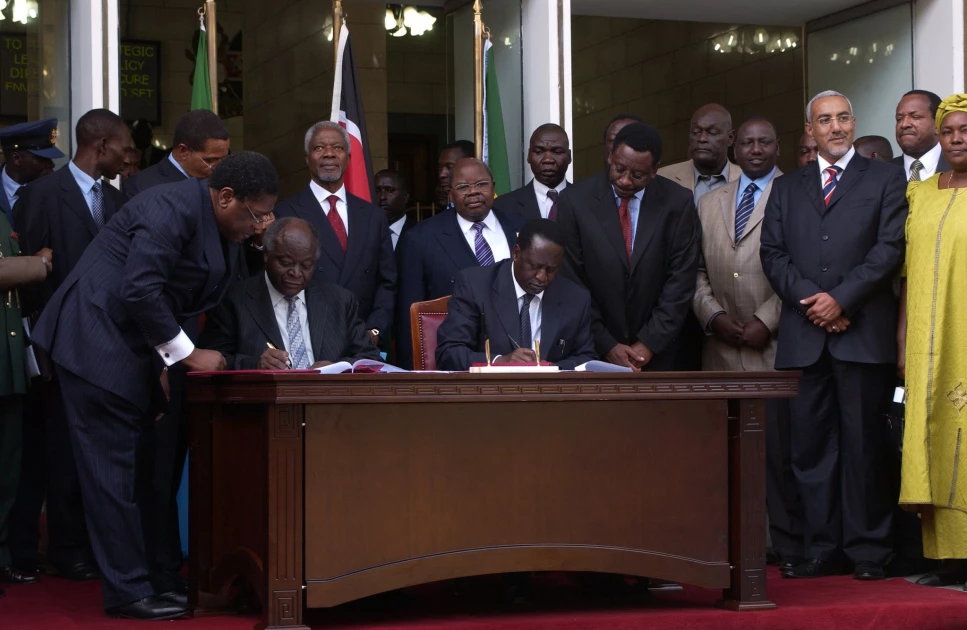How Raila Odinga shaped Kenya’s path to devolution and democracy

Former President Mwai Kibaki and Raila Odinga signing a power-sharing agreement at Harambee House in 2008. PHOTO|COURTESY

Audio By Vocalize
The late Raila
Odinga emerged as one of the architects of Kenya’s push for constitutional
change.
From his role in the reintroduction of multiparty politics in 1992 to launching the Building Bridges Initiative (BBI), the late Raila fought for constitutional reforms that sought to relinquish Executive power and share resources more equitably with the masses.
The late Raila
Odinga's four-decade legacy in the struggle for constitutional rights and
democracy dates back to the 1982 coup attempt, when he was arrested and charged
with treason.
Over the next
decade, the late Raila was detained without trial multiple times for his
pro-democracy activism and spent a total of nine years in prison, including a
period in solitary confinement.
Upon his release
from prison in the early 1990s, the late Raila joined the Forum for the
Restoration of Democracy (FORD), which successfully agitated for the return of
multiparty democracy in Kenya.
He thereafter
advocated for a push for a new constitution in Kenya through the Constitution
of Kenya Review Commission (CKRC). However, CKRC's path was marked by political
conflict and competing interests.
Established under the Constitution of Kenya Review Act of 2001, CKRC's mandate was to create a new, comprehensive, and “people-driven” constitution for Kenya.
However,
internal divisions over the extent of presidential power and devolution led
President Mwai Kibaki's faction to produce a revised “Wako Draft” that
significantly weakened the proposed devolution — a move which the late Raila
strongly opposed.
The Wako Draft was
rejected by the public in a 2005 referendum, which strengthened Raila's push
for more radical constitutional reforms.
With constitutional
reforms becoming a key part of the peace negotiations following the 2007–2008
post-election violence, the late Raila was instrumental in the formation of a
committee of experts that produced the harmonised 2010 draft constitution.
The final constitutional text, which included a two-tiered power-sharing system with 47 counties, was ultimately passed by voters through the 2010 referendum.
The late
Raila is credited with being instrumental in the creation of the 2010
constitution, which established a devolved system of government and significantly
curtailed the extensive powers of the presidency.
Raila's push for
constitutional reforms was reignited in 2018 through the Building Bridges
Initiative. The constitutional review effort, however, suffered a blow after the
Supreme Court declared it unconstitutional.
But even in the last
years of his life, Raila continued to advocate for constitutional reforms,
focusing on enhancing devolution and clarifying the roles of different
government arms through the NADCO report.
In August 2025, the
late Raila pushed for the transfer of the National Government Constituencies
Development Fund (NG-CDF) to county governments to prevent the centralisation
of power in the capital.


Leave a Comment